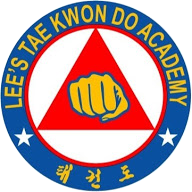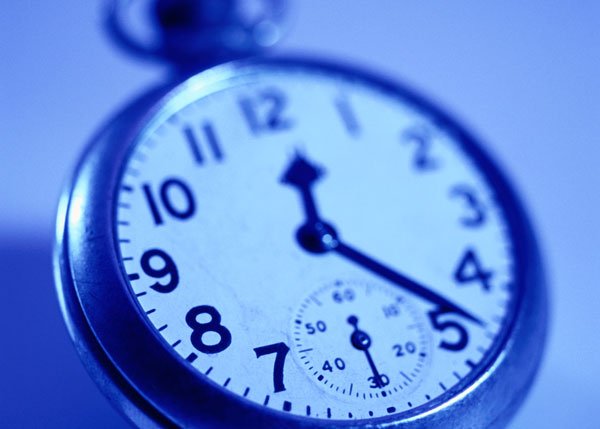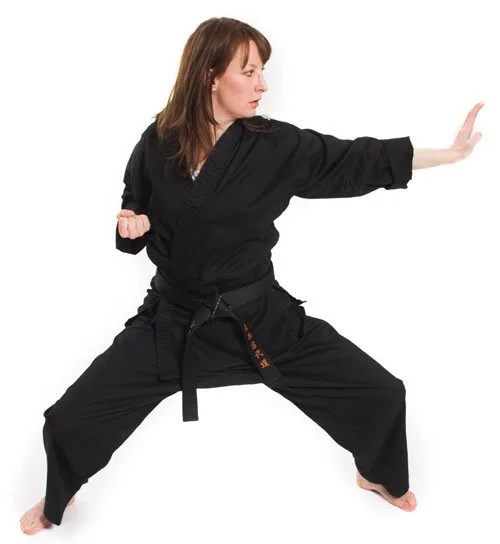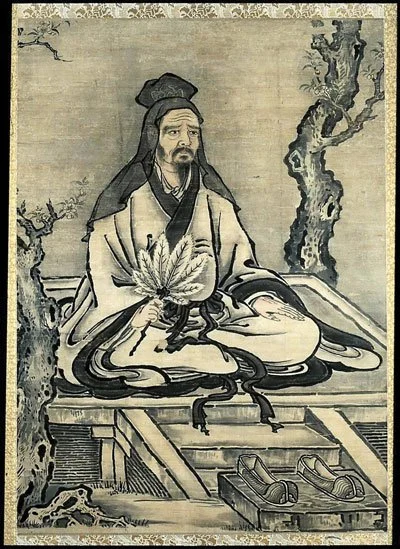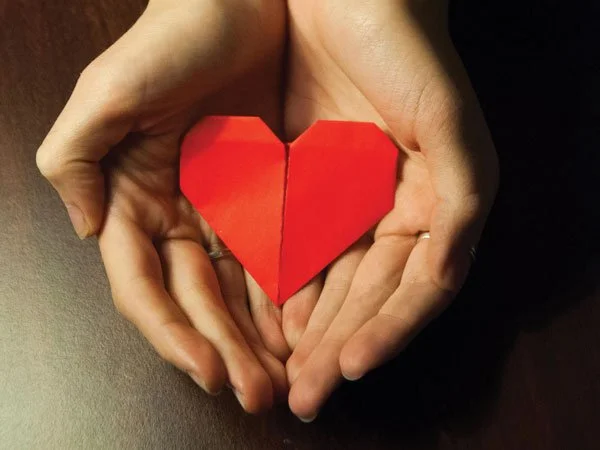Non-Resistance & Perfect Timing
The Great Master Tohei was renowned for his skills of self-defense.Although he was only five feet tall and one hundred and twenty pounds, he could easily defend himself against attackers that were twice his size. He welcomed all who doubted his skill and came to his school to challenge him, and he was never defeated.
Emancipation Proclamation
Whereas, on the twentysecond day of September, in the year of our Lord one thousand eight hundred and sixty two, a proclamation was issued by the President of the United States, containing, among other things, the following, towit:
Confucius on Friendship
Confucius once said:
“There are three friendships which are advantageous, and three which are injurious.
Friendship with the uplight, friendship with the sincere, and friendship with the man of much observation – these are advantageous. Friendship with the man of specious airs, friendship with the insinuatingly soft, and friendship with the glib-tongued – these are injurious.”
Exercise In The Morning Sharpens Brains Of Older Adults
Exercise In The Morning Sharpens Brains Of Older Adults
Weapons Training
Weapons training is one of the most exciting parts of learning a martial art. All systems have their choice of weapons, but the bottom line is that any weapon you use becomes an extension of your body (increases distance) and brings you closer to an opponent (decreases distance). Anything can be used as a weapon, but traditional weapons can be classified in four general categories, which often overlap.
The first, and most basic, type of weapon is a stick. Sticks are weapons like staffs, spears, Escrima sticks, etc.
The second basic type of weapon is a blade. Blades can be knives, double-edged swords, broadswords, etc.
The third basic type of weapon is a projectile. Projectiles can be things like throwing stars, arrows, darts, etc.
The fourth basic type of weapon is a combination. Combinations can be the nine-section whip, rope dart, three-section staff, etc.
Each weapon falls into another category based on its length, which is either short or long. Staffs and spears are sticks that would be long, but Escrima sticks would be considered short within the same category of sticks. Swords are considered short weapons, but a rope dart, which is a knife on the end of a rope, is a long weapon.
Each weapon has its place within the hands of a skilled fighter despite its length. The principle is the same with all weapons: They are an extension of the body. Some weapons, like a knife or Eskrima sticks, are an extension within the in-fighting range – in other words, you can still extend an empty hand and reach an opponent.
Other weapons, like a spear or nine-section whip, extend when opponents are just beyond your reach with an empty hand or kick. Projectiles extend your reach to opponents that are a greater distance away by throwing a star or shooting an arrow.
Of course, each weapon has its unique methods and purposes, like cutting or hitting, but ultimately, the common denominator is that they alter the space between you and your opponent. The weapon extends the distance of your body, so that the distance between you and the opponent is decreased. On another level, using weapons also increases the distance that you can project your own personal energy.
Training with weapons takes the martial artist’s skill to another level by increasing distance.
Good Thoughts Bear Good Fruit
“Every thought-seed sown or allowed to fall into the mind, and to take root there, produces its own, blossoming sooner or later into act, and bearing its own fruitage of opportunity and circumstance. Good thoughts bear good fruit, bad thoughts bad fruit.” - As A Man Thinketh
My friend, Mark Shearon, once posed a very enlightening question to a telephone audience, “Are you thinking about what you’re thinking about?” Read that sentence again and read it carefully. It’s not a play on words.
Most people give very little thought to what occupies their thinking and ever fewer people understand that “good thoughts bear good fruit, bad thoughts, bad fruit.” Most of us understand the law of sowing and reaping in other aspects of life, but we fail to understand that this same law is just as potent when our thoughts are involved.
Many visits to a primary care physician are for a psychosomatic illness – a disorder that involves both mind and body. According to Dr. David Sobel, a primary care physician and author of the highly respected Mind-Body Health Newsletter, a small percent of people who visit their physician for common maladies like nausea, headache and stomach upset are diagnosed with a physical, organic cause. That means that a large number of people are suffering from an illness that originated in ‘Thought’!
In other words, large numbers of people literally think their way into sickness.
If you’ve never trained yourself in “right thinking,” I challenge you to spend today monitoring and recording your thoughts. If you understand the power of thought in your life, at the end of the day you won’t be surprised at why your life is where it’s at today, be it good or bad.
In ‘Make Your Life Worthwhile’, Emmet Fox wrote, “The more you think about lack, bad times, etc., the worse will your business be; and the more you think of prosperity, abundance and success, the more of these things will you bring into your life.”
The more you think about your grievances or the injustices that you have suffered, the more such trials will you continue to receive; and the more you think of the good fortune you have had, the more good fortune will come to you.
And that’s worth thinking about.
A Message of Victory
Standing on a hilltop facing southwest, Pheidippides knew of the challenge before him.
His chief officer and military instructor had just ordered him to send a message of victory back to the capital, Athens. Yet, the officer had no horse for him and victory – in truth – still seemed a few hours away. Pheidippides would have to go on foot. A full day of hand-to-hand combat and tactical movements had worn his sandals down to nothing, and the sun was well on its way to setting. But the young Greek had no time to think about the orders.
The journey would take a full day as his destination lay over 24 miles away. He saluted his superior and headed off; even as he did this several menacing arrows from the Persian enemies sailed just overhead.
“Be there by sundown tomorrow! We need the Athenians to help us with the aftermath of this battle right away. Good luck,” shouted Bacchus, the chief officer of Pheidippides’ martial brigade.
“Yes sir!” Pheidippides bowed, then turned and started running downhill.
Luckily for Pheidippides the martial training he endured as an Athenian soldier allowed his fitness to reach peak performance. He gracefully descended the hill then continued on in a gallop across foothills and grasslands. Night fell, but he kept running. The desire to slow down and walk never surfaced. His discipline was too great. His dedication to success for Athens was too great. And his conditioning could handle it.
The general of the Athenian army was in the town center brushing his horse's mane, awaiting word from the battlefield. He glanced up in the general direction of the site in hopes that someone would appear and bring a message of victory -- a hope that would just have to wait until tomorrow, as it was too dark for any news to arrive. Well, the general had to rub his eyes in disbelief as there appeared from way down a marble avenue, a young soldier running in his direction. The boy appeared exhausted, covered in blood and sweat; and he held a message in his hand. The general ran to meet him and in a moment that would change physical fitness forever, young Pheidippides, after completing a 24-hour journey in only three, delivered his message of victory from the battlefield at the small town of Marathon.
Prevention of Obesity
Obesity is a medical condition characterized by having too much body fat, which can cause health problems and complications. Learning more about obesity is a helpful first step toward managing the condition and living a healthier life. Let’s take a look at some obesity statistics, ways to treat obesity, and how to help prevent it.
On average, one out of every three adults is obese, which is about 36% of the population. (Harvard, 2020)
About 18.5% of children ages 2 to 19 are considered obese in the United States. (Centers for Disease Control and Prevention, 2019)
Causes of obesity
Obesity is thought to be caused by a combination of physical, psychological, environmental, and/or genetic risk factors. Some diseases and medical conditions can also cause or contribute to obesity.
Obesity prevention
Preventing obesity involves a combination of many changes, such as:
Physical activity
Eating healthy foods
Reducing stress
Limiting screen time
Avoiding processed foods
Consuming plenty of fiber
Having strong support and social group
Freedom
Rejoice in the freedom that you possess because liberty is an extremely valuable treasure. Many times throughout history countries and their citizens have been captured and enslaved by foreign invaders. Over time, people in those enslaved lands devised plans to gain their independence in order to regain their freedom. We are often the beneficiaries of the precious freedom they obtained when they escaped from tyranny.
The idea of escaping from enslavement to gain freedom is similar to escaping an attack on a personal level. When someone grabs you, he is literally denying you your freedom to move. Self-defense techniques help you regain your freedom from people who take it away by violating your rights.
The basic principle in escaping tyranny is to use your strong points against the attacker’s weak points. We can simply and easily understand this principle when escaping a wrist grab. If you take a brief moment to examine the grasp of a human hand, you can see that there are four fingers on one side of the hand, and one thumb on the other side. Pulling to escape through the middle allows your attacker to utilize the strength of all five fingers to keep you a captive. If you were to try to escape by moving toward the four fingers, you are playing right into your attacker’s strength. However, if you were to try to escape by moving toward the attacker’s thumb, that is the weakest point of his grasp. The strength of your entire arm should be greater than the strength of his thumb, and you should be able to escape successfully.
You can use the same principle when escaping from any grab by a human hand. If your attacker grabs your arm instead of your wrist, simply move your arm toward the thumb to escape. If your attacker doubles his efforts by grabbing you with both hands, simply escape toward both thumbs, which is usually the middle area between the hands. Even a choke can be escaped by moving toward the thumb (or thumbs for a two hand choke).
Throughout history oppressed people have used their strong points against their oppressor’s weak points to escape slavery. In the American Revolutionary War, the American soldiers used their knowledge of the forests against the powerful British army, whose battle plans were extremely effective in open fields. Had they met the British army in an open battlefield, the Americans would surely have been defeated. By fighting in the woods, the Americans used their strong point against their oppressor’s weak point to win.
Keep Moving At Home & in the Community
Participate in a local road race.
Go swimming at your local recreation center.
Sign up for dance lessons with a friend.
Wash the car.
Plant and care for a vegetable garden (then cook the vegetables for healthy meals).
Find your inner child—build a snowman or rake the leaves then jump in your piles.
Start your day with a morning stretch or end your day with calming yoga.
Keep a list of quick activities, like squats or stretches, near the remote so that you can be active during, commercial breaks.
Philosophy
To be a success is not always to be a success individually. In fact, most of the time we achieve our successes as part of a team. Here are some principles that I know, when implemented on a regular basis, can turn any lackluster school into an outstanding one!
The Unbeatable Flying Crane
Master Li had a reputation for being a great fighter and was known as “The Unbeatable Flying Crane”. Although his skill in crane style kung fu was flawless, he was always being challenged by other fighters trying to become heroes and legends by defeating him.
On one occasion a fighter named Fu, who was an expert in tiger style, challenged Master Li.
Fitness
Ancient masters in charge of training militaries believed that soldiers needed to be more than fast, strong and agile.
They wanted troops to also have undying will power and selflessness, so they would stand in the face of danger, hold formation and work as a team. Ever since, the martial arts have encompassed teachings in responsibility, discipline and fairness.
Thanks to this rich history, the martial arts still embody more than just physical benefits alone; they give practitioners well-rounded “fitness” in many aspects of life; including four major categories: physical, mental, moral and life. Let’s take a look at each type and how the arts can help us improve.
Timing in Strategy
There is timing in everything. Timing in strategy cannot be mastered without a great deal of practice.
Timing is important in dancing and pipe or string music, for they are in rhythm only if timing is good. Timing and rhythm are also involved in the military arts, shooting bows and guns, and riding horses. In all skills and abilities there is timing. There is also timing in the Void.
There is timing in the whole life of the warrior, in his thriving and declining, in his harmony and discord. Similarly, there is timing in the Way of the merchant, in the rise and fall of capital. All things entail rising and falling timing. You must be able to discern this. In strategy there are various timing considerations. From the outset you must know the applicable timing and the inapplicable timing, and from among the large and small things and the fast and slow timings find the relevant timing, first seeing the distance timing and the background timing. This is the main thing in strategy. It is especially important to know the background timing, otherwise your strategy will become uncertain.
You win in battles with the timing in the Void born of the timing of cunning by knowing the enemies’ timing, and this using a timing which the enemy does not expect.
The Book of 5 Rings
4 Great Exercise Categories for Your Health
AEROBIC ACTIVITIES
Aerobic activities require moderate physical effort and include, but are not limited to: biking slowly, canoeing, ballroom dancing, general gardening, using your manual wheelchair, arm cycling, walking briskly, and water aerobics. Examples of vigorous activities are basketball, jumping rope, running or bicycling on hills, soccer, swimming laps, and martial arts.
Not sure whether you are at a moderate or vigorous activity level? Try the talk test. If you can talk while you are active, then you are participating at a moderate level. If you can only say a few words without stopping to catch your breath, then you are engaging in vigorous activity.
MUSCLE-STRENGTHENING ACTIVITIES
Strengthening activities work all the major muscle groups - legs, hips, back, chest, stomach, shoulders, and arms. These activities include, but are not limited to: lifting weights, push-ups, sit-ups, and working with resistance bands. Don’t have weights? Common household items such as bottled water and soup cans can also be used.
BONE-STRENGTHENING ACTIVITIES
Bone-strengthening activities produce a force on the bones that promotes bone growth and strength. This force is commonly produced by impact with the ground. The good news: bone-strengthening activities can also be aerobic and muscle-strengthening like running, jumping rope, basketball, tennis, and hopscotch.
The Secret of Dae Hyun
Dae-Hyun was revered as a great warrior and field general for the provincial army of Hanju. On numerous occasions his battlefield strategies and sword skills kept villages within Hanju safe from thieving invaders.
And once again, Dae-Hyun was called back into service as Hanju’s borders were threatened. But this was the first time he had been activated for battle since the birth of his son Chin-Mae. Now five years old, Chin-Mae had just begun to understand his father’s accomplishments and teachings. The boy was even taking after his father’s delicate, yet fierce sword wielding techniques.
Vision
Life is growth. Babies blossom into children. Seeds spring up as lush plants. Although both of those examples are physical, growth also manifests itself mentally and spiritually.
While physical growth occurs naturally with time, mental and spiritual growth rely on the individual and choices made in life. This is where vision comes into play. Vision, at its best, allows us to see into the future, beyond merely today and tomorrow. With thorough vision we can see what lies far ahead in life.
Let’s use a white belt, beginning martial arts student to illustrate the meaning and power of vision.
The Importance of Giving
Once, long ago, there was a very small village hidden away in a valley. Everyone in the country knew that this village was where the finest martial artists in the land came from, but no one knew why. Spectacular warriors, brilliant men and powerful leaders had all emerged from this village at one time or another. A very curious young man named Addington decided to visit the village to find out what made its people so unique.
BENEVOLENCE
Once, long ago, there was a very small village hidden away in a valley. Everyone in the country knew that this village was where the finest martial artists in the land came from, but no one knew why. Spectacular warriors, brilliant men and powerful leaders had all emerged from this village at one time or another. A very curious young man named Addington decided to visit the village to find out what made its people so unique.
